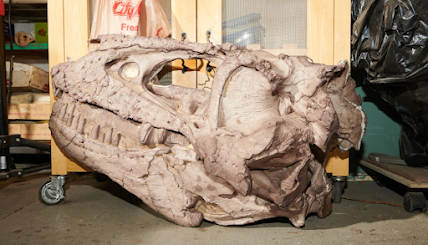Bones and Beyond: Can Living Things Be Preserved in Bone Structure Before Fossilization?
The preservation of living things within bone and the process leading up to fossilization is a fascinating topic that involves several stages of biological and geological processes. Here’s a detailed explanation:
Preservation in Bone
1. Bone as a Medium for Preservation:
Bones are composed of minerals and organic materials that can potentially preserve some forms of biological material. However, the preservation of living tissues within bone is extremely rare and complex.
Organic Material: Bones contain collagen, a type of protein that can preserve for some time under specific conditions. In rare cases, fragments of soft tissues, like blood vessels or skin, have been found in well-preserved dinosaur fossils or ancient mammoths. However, these cases are exceptions and involve exceptional conditions.
Inclusions: Sometimes, inclusions such as parasites, bacteria, or even small plants can be preserved within the bone matrix, especially if the bone is fossilized very quickly.
2. Decay Before Fossilization:
Before bones become fossilized, they are subject to decay processes:
Biological Decay: After an organism dies, its soft tissues decompose relatively quickly due to microbial action and environmental conditions. Bones, being more resilient, can last longer, but they are not immune to decay. The organic components in bones, like collagen, gradually break down over time.
Environmental Factors: Factors such as temperature, humidity, and soil conditions can affect how long bones and any potential inclusions last before fossilization. In typical conditions, most soft tissues and living cells decay long before fossilization occurs.
Fossilization Process
1. Rapid Burial:
For fossilization to occur, the bones must be buried rapidly to protect them from decay. This rapid burial helps in preserving the bone structure and increases the chances of fossilization.
2. Mineralization:
Over time, groundwater rich in minerals can seep into the bones. These minerals replace the organic materials in the bone through a process called permineralization. As a result, the bone gradually becomes a mineralized fossil, with the original organic material largely replaced by minerals.
3. Preservation of Inclusions:
If the bone is fossilized very quickly, there is a slight chance that some organic inclusions or remnants might be preserved along with the mineralized bone. However, the preservation of complete or even significant parts of living tissues within the bone is extremely rare and usually involves very special conditions.
Examples and Exceptions
Dinosaur Fossils: In some exceptionally well-preserved dinosaur fossils, scientists have found traces of soft tissues, including blood vessels and proteins. These discoveries are extraordinary and typically result from very rapid and specific burial conditions that inhibit decay.
Mammoth Remains: The discovery of well-preserved mammoth carcasses in Siberian permafrost has yielded soft tissues and even some cellular structures. The cold environment played a crucial role in preserving these remains, including bones.
Conclusion
In summary, while bones can preserve some forms of biological material and inclusions, complete preservation of living tissues within bones before fossilization is highly unlikely. The decay of organic material typically occurs before fossilization, leaving behind mainly mineralized structures. Fossilization itself is a rare event, often requiring specific and rapid conditions to prevent the loss of biological material.






Comments
Post a Comment